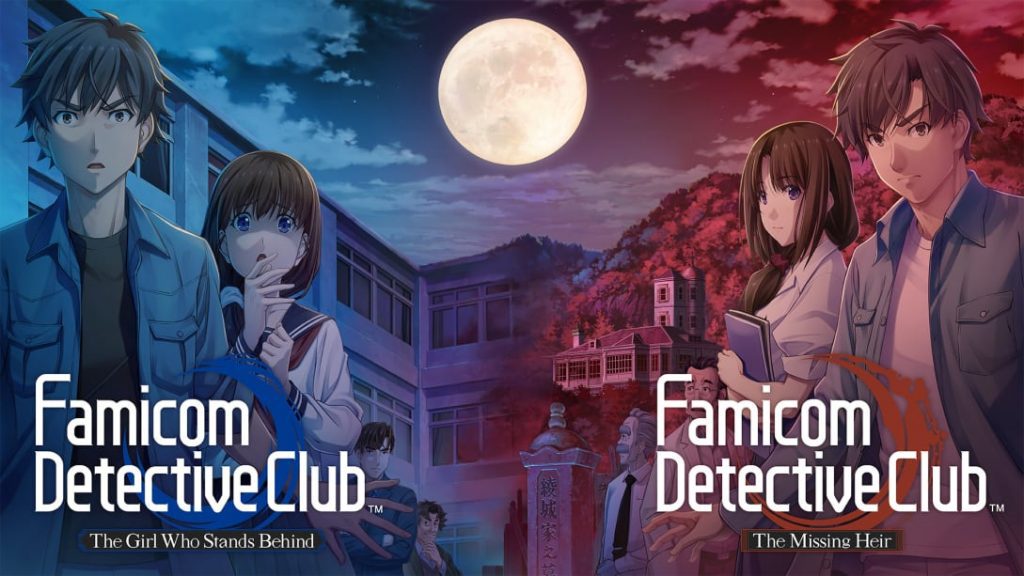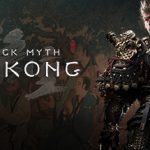This showed up at a recent Nintendo Direct, and my hype was through the roof. This is a series that came out on the Famicom (japanese version of the NES), through the Disc System (each game had 2 discs). It’s a point-and-click adventure game series that never got officially translated, but I know it was a big deal originally, serving partly as an inspiration to the Ace Attorney series.
I’m combining both games in one post, so it might be a kinda long post considering the type of game it is. I will be as spoiler-free as I can though, because for this kind of game it’s largely about the story, so I don’t want people to know the whole plot just from reading my review.
Let’s go and see what the west has been missing since the 80s!
Developer and Publisher: Nintendo
Release date: May 14th 2021
Platforms: Switch
Genre: Point-and-click adventure game
So this is a remaster of classic NES games. I never played those because… japanese (I can’t read it quite well enough to play a whole text-based adventure game). But I have looked at it, and for what the NES could do technologically, Famicom Detective Club managed to still look pretty good. It had a windowed design, kinda like looking at Final Fantasy 1 battles on NES. One window had the graphics of your immediate area (and whoever you were talking to), one window had the menu which is the main interaction, and one had the text where descriptions of things/people would appear, as well as dialogue. The SNES got a port of the second game, which kept basically the same style but things looked a bit better. One thing I will note is that the new character visuals certainly made some of the characters look way prettier in this version, Urabe isn’t nearly as hot in the SNES version.
This version upgrades the graphics a million times over. You get well-detailed hand-drawn environments, really nice looking hand-drawn characters who sometimes have actually pretty solid animation surprisingly, and the environments take the entire screen, with the menu being a transparent box on the left corner of the screen. It looks extremely good. Plus the music is re-arranged, with real-sounding instruments and most of it is pretty solid. You can actually switch between the arranged soundtrack and the classic NES music, and you can see they kept the same composition. The NES music was no slouch of course. And The Girl Who Stands Behind, which got an SNES port, lets you switch to the SNES soundtrack as well… I like it a bit less than the arranged and NES soundtracks, but it’s fine. Speaking of sound, most of the dialogue is voice acted (in japanese). Most of the VAs are pretty good (I hear Ayumi’s VA returns from the Satellaview game), I did notice some pretty funky voice clips on some of them like best girl Hitomi, but most are good and well acted. One really weird part in the second game, there’s a TV news report that’s fully voiced talking about a truck accident that seems to have just happened (which doesn’t end up being relevant I think)… but not subtitled at all. Not sure if that’s a mistake, or not considered important enough to translate. But then why have it?
So the visuals are great and the music is good, and those were the main upgrade of this game. The gameplay… seems largely the same, as does the story in both games… from what I can gather looking at gameplay of the originals with limited japanese knowledge.
The Missing Heir was the first game in the series. You play as *insert whatever name you want here*, the assistant detective of the Utsugi Private Detective office. It starts with you getting woken up by Amachi, a man who found you unconscious, seemingly haven fallen off a cliff. You have lost your memory, but quickly find out that you’re a detective, and are in the middle of investigating a potential murder of an old woman, Kiku Ayashiro, the rich CEO of a company that is also the head of the wealthy Ayashiro family that runs the company. The doctor named the cause of death as heart failure, but the butler of the house believes there’s foul play here so he hired you to look into it, as the timing of the incident is suspect (the same day her will was read). You do have memory issues so you need to reacquaint yourself with the case, and try to find if Kiku was murdered, but the case gets pretty wild as you may expect with many Ayashiro family members to contend with, and the nearby villagers talking about a curse. Not gonna spoil any of it here, but there’s some good twists. Many red herrings in here, most of which I’d say are pretty obvious.
If I had any complaints about the story in The Missing Heir, it would be that some of the story relies on a pretty massive plot contrivance… I won’t get into it here, but it sure is really convenient that a specific character here is even involved at all. I saw it coming miles away though, especially as hints started popping up confirming what I thought. That said, I will say that I predicted most of the story’s big plot points before even hearing about Kiku’s death, funny enough. I was just joking around with myself in the beginning of the game, and somehow I figured out some of the big plot points before knowing about almost any of the characters (partly because of the game’s title). I also feel some of the actions from one of the potential villains were a bit odd, but I can think of some pretty solid explanations, so I don’t think the story breaks because of it. One thing that is really strange (and I won’t explain in any detail why) is that you have to name your character, which is definitely weird once you get close to the end.
Overall it was a fun story with some characters I quite liked. Zenzou was cool.
The Girl Who Stands Behind was the second game in the series, but it was actually a prequel to The Missing Heir. So the story here is how your character meets Ayumi Tachibana, his assistant from the first game. You still play as *insert whatever name you want here*, an orphan who is running away from home to find his parents. He is running from cops for no reason but runs into Detective Utsugi, but ends up being recruited as an assistant by Utsugi, so he becomes a detective in his own right at the early age of 15 (so this is 2 years before the first game). You are tasked to take on the case of the death of Yoko Kojima, a high school student that is your age. It seems she was investigating “The Girl Who Stands Behind”, a school legend where people hear a girls voice behind them and turn around to see a girl covered in blood. And it seems that, through investigating that school legend, Yoko ended up getting murdered (strangled and thrown into the river). Her friend who is in the same club at school, Ayumi Tachibana of the Detective Club, ends up helping you in this investigation, as Utsugi leaves it mostly in your hands for the whole game. You meet a few teachers, school staff and students, in the effort to get and bit of info about Yoko’s death, The Girl Who Stands Behind and a 15 year old murder case that might be related to the school legend. It’s an interesting story that was definitely fun to piece together and figure out how every character fit in. While I had a few good theories and one of them was almost right, it wasn’t right in quite the way I was expecting and it was actually pretty interesting how it did it.
I have fewer complaints about this game’s story than the first, as it involves almost no contrivances that I can detect (I mean, the fact that the main character is 15 but also a detective’s assistant is a bit convenient as far as investigating something involving high schoolers, but that has some reasoning). There’s one weird point at the very end that definitely confused me a bit, but it’s not important and I don’t think it breaks anything, it just adds questions that shouldn’t be there.
You can play these 2 games in any order, though I’d say playing The Girl Who Stands Behind first might make a bit more sense because of something in the first game. I played them in release order and I realized that The Girl Who Stands Behind has some links to the first game that almost make it better to play them in reverse order (as the second one ends with a “to be continued” leading to the first game). It’s nothing massive, but I think it makes more sense.
One weird thing it does in the second game, is that it does a personality test at the end which… is weird (like how focused you were and such? Not sure how it determines that)… And also it tests your compatibility with Ayumi, giving you a heart score out of 20, which is apparently something from the SNES version, which judges you based on how you treat Ayumi and interact with other girls (like touching Yoko’s skirt while investigating her corpse, I assume that removes hearts? Maybe?). Weird, not sure if getting 20/20 does something special, I got 9/20, Hitomi laughed at me so I assume there’s different scenes based on score.
I will note the translation might have some issues, I know enough japanese to tell you that much. If someone in the game says “Kanojo wa” you translate that to “She is”, not “They are”. This is pretty simple first-day-of-japanese-class-level shit. Makes me wonder what other parts might not be translated correctly that I can’t quite catch with my level of japanese knowledge from the voice acting. Maybe it’s a weird “localization” thing? Most of it was fine from what I could tell, but I wasn’t always paying close attention to the voice acting. Most of the text did make sense at least.
So that’s finally it for the presentation… The gameplay here is actually not too complex to talk about, so it’s a good thing to keep for last.
You interact with the game pretty much entirely through menus. There’s a few exceptions, but, mostly, menus. This is a point-and-click adventure game, though more menu-driven than cursor-driven (so it’s more Ace Attorney than Monkey Island). I see people calling it a visual novel, but that’s really not the case (visual novels are usually more about making choices that lead to different story branches, while adventure games like this or Ace Attorney have a single set plot that you need to navigate your way through). Most of the games will have you facing another character and talking to them to get clues. Choosing the Talk option generally gives you a list of things to talk about. The selection of things to talk about is generally about clues you found or characters that you are currently curious about, as well as a general “What do you know”. You can generally also Look/Examine, which either lets you select things to examine (specific things if your possession or specific things in the environment), or control a cursor in the environment to select things/people to look at. Some characters react differently to being observed. Almost every time there’s something you can interact with you see a text box next to the cursor, though there’s a few examples of things you can observe that aren’t named, or a sometimes single object/person having several observable “parts” (like a corpse possibly having several areas of interest). There’s a few other actions, like calling out to different characters which is basically selecting who to talk with, and you can also show items you have to people, or take things to carry around or use in a few cases. The Missing Heir has a “Remember” feature, which helps you regain your memory from your amnesia (or sometimes just remember that you needed to go meet someone, so it sometimes serves as a hint system when you don’t get a “…”), and The Girl Who Stands Behind has a “Think” option where you… think about stuff. Also sometimes serves as a bit of a hint system at points. And finally you can Travel, which lets you go to different places.
So how the game works is that you basically have to figure out what the next thing you need to do is that will progress the plot. As far as the Travel command, the game will only ever let you go to places where you have things to do. So if you only have the front of the school and the art room to do things in, that’s where you’ll have access to. Those things will generally be talking to someone and figure out which thing to talk about. You can absolutely brute force the game and just try every option, of course, but that’s not always quite gonna work. There’s a few points where you have to use the same option several times in a row, and sometimes doing something in one talk option will change what is being said in another, thus progress through the story. Maybe you’re done with dialogue options and need to Think, or maybe you need to Look at something and get a clue which will get you some more dialogue options. It’s pretty fun when you figure out exactly what you need to do on the first try though. There’s definitely a few cryptic moments, but because the game locks you in one or 2 spots at a time, it’s pretty easy to exhaust possibilities and eventually figure things out. It is fairly specific about what you need to do at points, there’s one time in the span of 2 games where I used a guide (2 characters weren’t responsive anymore and Remember did nothing).
At some points in both games it may ask you questions that you may need to answer. In The Missing Heir it will require you to write words on the Switch keyboard, while in The Girl Who Stands Behind it asks you about characters and you have to pick them from your notepad. I didn’t talk about the notepad much, basically you take notes anytime something story-important happens. This is something that is good to remember details on characters, but it never actually comes into play gameplay-wise other than selecting from that list.
Also The Missing Heir has one part with different gameplay, a first-person dungeon crawler segment, it’s just there for one puzzle that’s petty simple but it’s a fun little change of pace at the climax.
It’s simple gameplay, it’s just figuring out what to say or observe next to progress the plot, but it’s pretty fun. It’s like in any point-and-click adventure game and figuring out where to use that rubber chicken you found before.
Overall
I had lots of fun with these games. Considering the technology of the time these were originally made, this was pretty great then. Nowadays it does hold up pretty well and the remaster of it with full hand-drawn graphics, nearly full voice acting and not messing with the gameplay that made the originals popular, this is still mostly great. The gameplay is fairly simple, as is the case with point-and-click games usually, but it’s fun to figure out what needs to be done, though trial-and-error also works so you can brute force your way through. And either way, each game is fairly short, ~8 hours each. I did quite enjoy the story in each, though the first one has a few too many kinda-out-of-nowhere of plot contrivances.
The comparison to Ace Attorney that I’ve seen a lot of isn’t quite accurate. Yes they are similar games, and Famicom Detective Club is an inspiration for the Ace Attorney games, but Ace Attorney has considerably deeper gameplay, and they’re funner overall. There’s more to do in Ace Attorney compared to Famicom Detective Club for sure.
Some people will probably complain about the length for these games, as well as the price. And truthfully they’re not wrong, about the price part. If this was just one game at the price of one of these, it would be good value. At the current price, it is asking a bit much. Considering the Ace Attorney games are on Switch and have WAY more content each and are cheaper… it does make the cost of Famicom Detective Club pretty unappealing.
I do recommend these, they’re great, but I think Nintendo need to do something about the price, it will turn people off and I wish this could be a big hit so they might make an actually new one (maybe with more content and deeper gameplay). If you haven’t played Ace Attorney, there’s the first trilogy on Switch, and the Great Ace Attorney collection is coming soon too, and they have WAY more value for how much they cost, then definitely get those before Famicom Detective Club.
Getting Ayumi Tachibana in Smash would be great. She was almost included in Melee actually (in the end Sakurai chose Fire Emblem reps instead), and I’m curious what kind of moveset she would’ve gotten.
…
Actually, I’m quite curious why this is just The Girl Who Stands Behind and The Missing Heir. Where’s BS Detective Club: Lost Memories in the Snow? It’s the last game of the series, which was on the Satellaview attachment of the Super Famicom in Japan… maybe it’s lost to time because of the weirdness that was the Satellaview (games on it ran alongside radio broadcasts, so they may have been voice acting going on on the radio while you were playing the game, and maybe that part of the game is no longer… in existence… and there was the timed nature of Satellaview games too).








Leave a reply